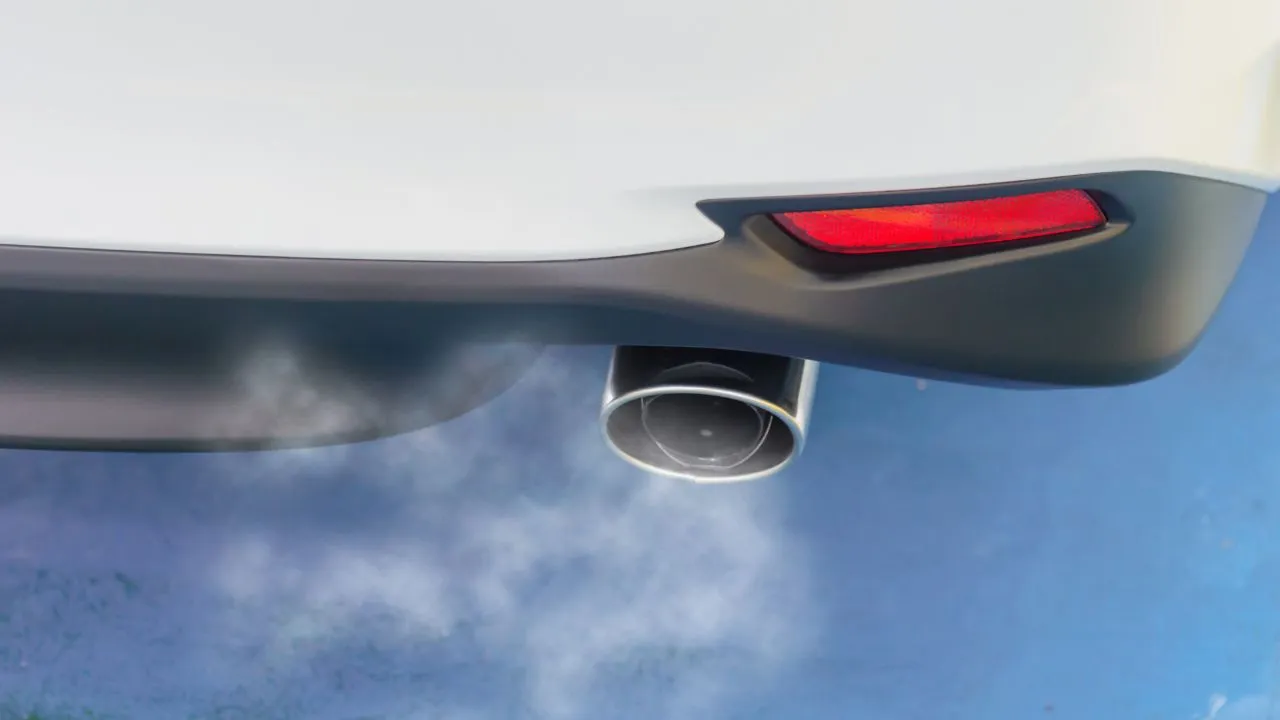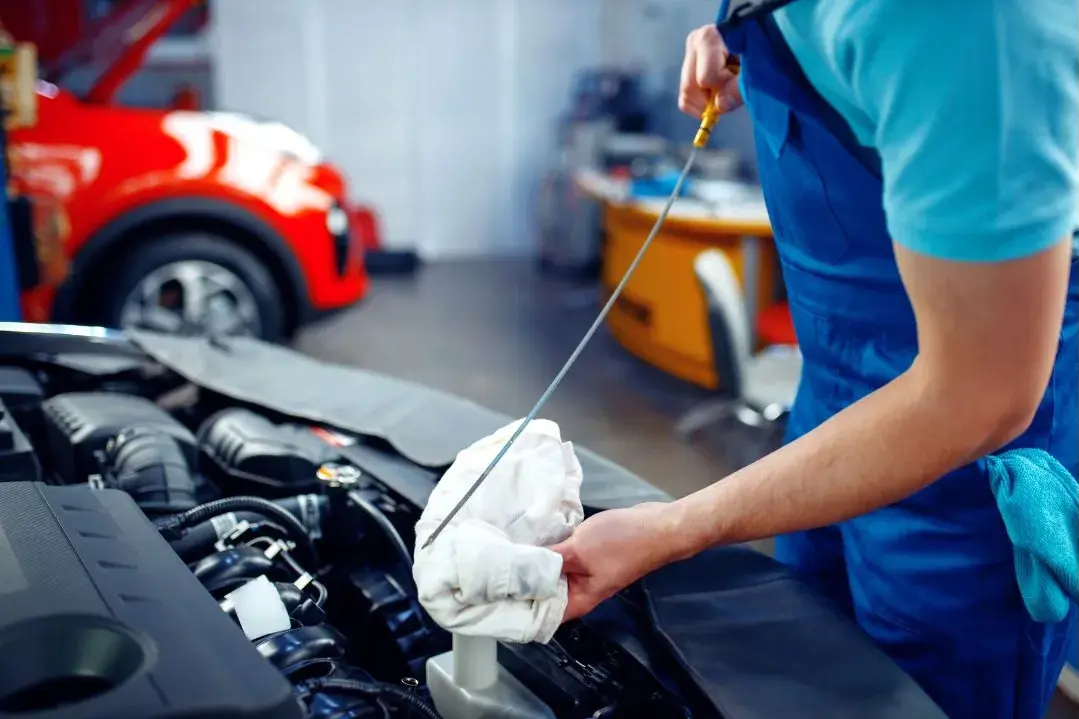Honda CR-V Engine Oil Capacity (By Model Year)
We all agree that oil changes are essential to maintaining your CR-V, so knowing the engine oil capacity is valuable. Without this knowledge, you may be unsure how much oil you need to purchase for a replacement. Oil capacity is the maximum amount of fluid required to keep the engine fully lubricated.
In this guide, I will provide the Honda CR-V oil capacity for each model year. Additionally, I’ll explain why oil capacity is crucial and provide information on how to check and change your oil.

CR-V Oil Capacity By Model Year
The owner’s manual, usually in the “Specifications” section, contains information about the oil capacity for your CR-V model year.
I’ve summarized the oil capacity for each Honda CR-V model year to make it easier to find. Simply search for your CR-V model year below, and you’ll see the corresponding oil capacity listed next to it.
For those with CR-V model years 2017-2025, note that these models come with two engine options, each with different oil capacities. Be sure to recognize the engine specifications for your CR-V.
| Model Year | Oil Capacity (w/ Filter Change) | Oil Capacity (w/o Filter Change) |
|---|---|---|
| 2025 | 2.0 L4-cyl (Hybrid): 4.2 qt. (4.0 L) 1.5 L 4-cyl: 3.7 qt. (3.5 L) | 2.0 L 4-cyl (Hybrid): 3.9 qt. (3.7 L) 1.5 L 4-cyl: 3.4 qt. (3.2 L) |
| 2024 | 2.0 L 4-cyl (Hybrid): 4.2 qt. (4.0 L) 1.5 L 4-cylinder: 3.7 qt. (3.5 L) | 2.0 L 4-cyl (Hybrid): 3.9 qt. (3.7 L) 1.5 L 4-cylinder: 3.4 qt. (3.2 L) |
| 2023 | 2.0 L 4-cyl (Hybrid): 4.2 qt. (4.0 L) 1.5 L 4-cyl: 3.7 qt. (3.5 L) | 2.0 L 4-cyl (Hybrid): 3.9 qt. (3.7 L) 1.5 L 4-cylinder: 3.4 qt. (3.2 L) |
| 2022 | 2.0 L 4-cyl (Hybrid): 4.0 qt. (3.8 L) 1.5 L 4-cyl: 3.7 qt. (3.5 L) | 2.0 L 4-cyl (Hybrid): 3.7 qt. (3.5 L) 1.5 L 4-cylinder: 3.4 qt. (3.2 L) |
| 2021 | 2.0 L 4-cyl (Hybrid): 4.0 qt. (3.8 L) 1.5 L 4-cyl: 3.7 qt. (3.5 L) | 2.0 L 4-cyl (Hybrid): 3.7 qt. (3.5 L) 1.5 L 4-cyl: 3.4 qt. (3.2 L) |
| 2020 | 2.0 L 4-cyl (Hybrid): 4.0 qt. (3.8 L) 1.5 L 4-cyl: 3.7 qt. (3.5 L) | 2.0 L 4-cyl (Hybrid): 3.7 qt. (3.5 L) 1.5 L 4-cyl: 3.4 qt. (3.2 L) |
| 2019 | 2.4 L 4-cyl: 4.7 qt. (4.4 L) 1.5 L 4-cyl: 3.7 qt. (3.5 L) | 2.4 L 4-cyl: 4.4 qt. (4.2 L) 1.5 L 4-cyl: 3.4 qt. (3.2 L) |
| 2018 | 2.4 L 4-cyl: 4.7 qt. (4.4 L) 1.5 L 4-cyl: 3.7 qt. (3.5 L) | 2.4 L 4-cyl: 4.4 qt. (4.2 L) 1.5 L 4-cyl: 3.4 qt. (3.2 L) |
| 2017 | 2.4 L 4-cyl: 4.7 qt. (4.4 L) 1.5 L 4-cyl: 3.7 qt. (3.5 L) | 2.4 L 4-cyl: 4.4 qt. (4.2 L) 1.5 L 4-cyl: 3.4 qt. (3.2 L) |
| 2016 | 4.6 qt. (4.4 L) | 4.4 qt. (4.2 L) |
| 2015 | 4.6 qt. (4.4 L) | 4.4 qt. (4.2 L) |
| 2014 | 4.2 qt. (4.0 L) | 4.0 qt (3.8 L) |
| 2013 | 4.2 qt. (4.0 L) | 4.0 qt (3.8 L) |
| 2012 | 4.2 qt. (4.0 L) | 4.0 qt (3.8 L) |
| 2011 | 4.4 qt. (4.2 L) | 4.2 qt. (4.0 L) |
| 2010 | 4.4 qt. (4.2 L) | 4.2 qt. (4.0 L) |
| 2009 | 4.4 qt. (4.2 L) | 4.2 qt. (4.0 L) |
| 2008 | 4.4 qt. (4.2 L) | 4.2 qt. (4.0 L) |
| 2007 | 4.4 qt. (4.2 L) | 4.2 qt. (4.0 L) |
| 2006 | 4.4 qt. (4.2 L) | 4.2 qt. (4.0 L) |
| 2005 | 4.4 qt. (4.2 L) | 4.2 qt. (4.0 L) |
| 2004 | 4.4 qt. (4.2 L) | 4.2 qt. (4.0 L) |
| 2003 | 4.4 qt. (4.2 L) | 4.2 qt. (4.0 L) |
| 2002 | 4.4 qt. (4.2 L) | 4.2 qt. (4.0 L) |
| 2001 | 4.0 qt. (3.8 L) | 3.8 qt. (3.6 L) |
| 2000 | 4.0 qt. (3.8 L) | 3.8 qt. (3.6 L) |
| 1999 | 4.0 qt. (3.8 L) | 3.8 qt. (3.6 L) |
| 1998 | 4.0 qt. (3.8 L) | 3.8 qt. (3.6 L) |
| 1997 | 4.0 qt. (3.8 L) | 3.8 qt. (3.6 L) |
Why Is Oil Capacity Important?
You must ensure your car’s engine has enough oil to keep it in good shape.
If oil is so important to the engine, wouldn’t putting much of it in be great? In fact, while overfilling isn’t as bad as underfilling, it doesn’t provide any benefits and can even cause problems. Here are a few things to consider.
What Can Happen if You Put Too Much Oil in Your Car?
- Oil added to a vehicle’s engine is stored in the oil pan reservoir. Adding too much oil can cause it to overflow and flood parts that should not be in contact with oil. When this happens, the oil that contacts these parts will froth, and the froth will not be able to lubricate the engine properly.
- Excessive oil increases components and overall engine pressure. If this persists over a long period, it can damage the engine gaskets and eventually lead to oil leaks.
How About Underfilling the Oil?
- Engine Damage: If the oil in the car engine does not meet the recommended amount, friction between metal parts will occur. This is obviously very dangerous for engine components.
- Overheating: Lack of lubrication in the engine means it needs to work harder, leading to overheating.
- Reduced Power and Increased Fuel Consumption: The engine becomes less powerful and more fuel-intensive.
Signs of Oil-Level Issues

Recognizing the signs that the oil level in the system is either too high or too low can prevent your car from experiencing further damage. Here are the symptoms of oil level problems to be aware of, especially after changing the oil.
High Oil Level Warning Signs:
- The oil pressure gauge shows a high reading or fluctuates
- Check Engine light on the dashboard
- Blue exhaust smoke
- Burning smell
- Leaking oil
- Rough idle
- Overheating engine
- Increased engine noise
- Hesitant acceleration
Low Oil Level Warning Signs:
- Check Engine light on the dashboard
- Burning oil smell
- Poor Performance
- Overheating
- Stalling engine
- Knocking or clunking noises
Checking Your CR-V’s Oil Level
According to Autozone.com, you should check your engine oil once a month, every 1000 miles, or whenever you go on a long trip. In the past, checking the oil at every fuel fill-up was recommended, and some gas stations even provided this service.
You should also check the oil immediately after an oil change to ensure it is filled to the correct level. Whenever I have free time, I check a few things under the hood, including the engine oil, brake fluid, coolant, and so on.
To my knowledge, the only way to check the engine oil level is by manually using a dipstick. This is not difficult to do—you can do it anytime and anywhere. All you need is a tissue or rag.

Here are some simple steps to check your CR-V’s oil level.
- Park your CR-V on level ground.
- Warm up the engine for approximately 5 minutes.
- Wait approximately three minutes after turning off the engine before checking the oil.
- Remove the dipstick (orange).
- Wipe the dipstick with a clean cloth or paper towel.
- Insert the dipstick back all the way into its hole.
- Remove the dipstick again, and check the level. It should be between the upper and lower marks.
- Clean the dipstick and reinsert it.
If the oil level is near or below the lower mark, slowly add oil, being careful not to overfill.
However, if you find that the oil exceeds the upper mark, you need to remove the excess oil. Open the oil drain bolt and let out 1 or 2 cups of oil, then close the plug and recheck with the dipstick. If you have a suction pump, this process will be very convenient.
(2020 Honda CR-V Owner’s Manual)
Wrapping Up
Maintaining the engine oil at the correct level is crucial for the smooth running of the system.
The chart above simplifies oil changes, helping you easily find the correct amount for each CR-V model year and engine type.
If you have any questions or want to share your experience, please write in the comment section!

How much oil is maximum to add when oil mark is at the lower hole mark? Or another way to ask is how much oil does it take to reach from the bottom hole to the top hole? Thanks.
Hi, thanks for asking! I haven’t measured the exact amount, but what I usually do is add about 100 ml at a time. I start the engine for a few minutes, then check the dipstick. If it’s still low, I add a bit more and repeat. This way, I avoid overfilling and can easily control the oil level without adding too much at once.